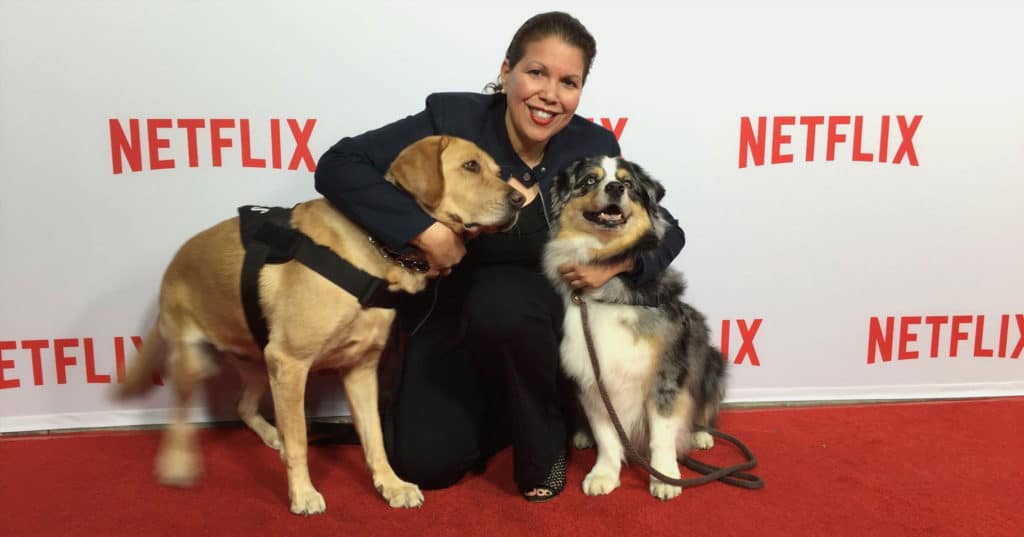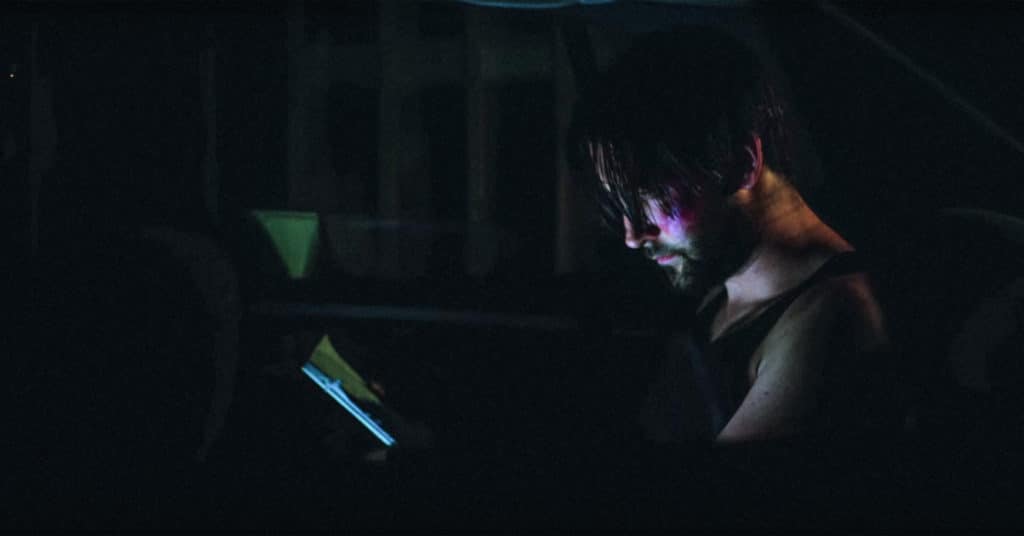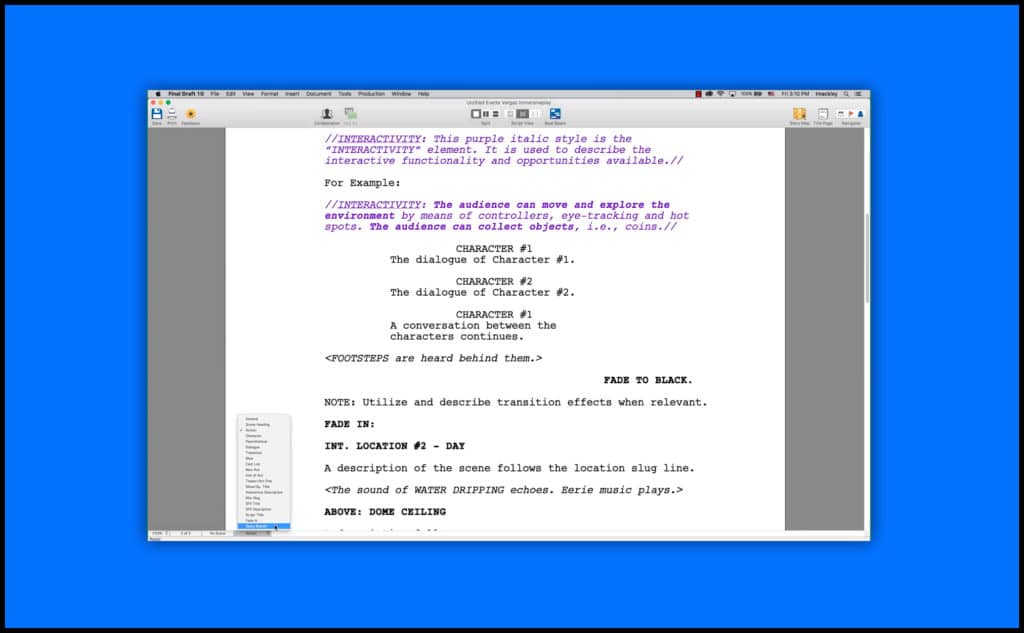Fade In: Every VR Script Has a Beginning, But Evette Vargas Wants to Set Standards with the Scriptwriting
Evette Vargas, co-founder of the production company Digital-Reign, is on a mission to bring the growing immersive media industry a standardized VR, AR and MR script format.
An emerging media storyteller and New York Times “Artist to Watch,” Vargas is well-versed to speak to the burgeoning industry’s needs. She writes, directs and produces multiplatform and virtual reality work, including series for Amazon, MTV, Bravo, and DirectTV. She also writes apps, games and branded entertainment for Fast & Furious, the Lord of the Rings trilogy, and Madonna. Her digital series, Dark Prophet (starring Henry Rollins), was in the running for two Emmys. The series premiered at Sundance, and is available on Amazon Prime.

Considered an expert on immersive media, Vargas thinks of herself first and foremost a storyteller. Well-grounded in the craft, Vargas studied at NYU’s Tisch School of Arts where she won for best student work. She later followed the two-year showrunner track at UCLA, eventually earning her MFA in Screenwriting and Television Production.
The Same but Different
In a flash of foresight, Vargas kept a list of the screenwriting similarities and differences between the traditional and immersive mediums. The list formed the basis of the Final Draft Evette Vargas Immersiveplay, the industry standard template for writing VR, AM and MR narratives.
Good news for screenwriters who also want to make the jump to VR: they do not have to ditch Final Draft and purchase brand new software. Vargas created a VR screenwriting template that can be downloaded straight from Final Draft templates.
Missing elements needed for immersive stories–such as ramped up SFX descriptions, story branching and viewer POV–are found in the “Elements Window” located in the status bar at the bottom of the Final Draft page.
Vargas maintains that whether scriptwriting for “the flatties,”, the following holds true for virtual, too: you still need a compelling story with a beginning, middle and end. It’s a structure unchanged since Aristotle. Says Vargas, “All storytellers, especially writers, must learn the craft of writing. This craft is applied to all mediums, with specific focus per medium.”
What is different in VR is the writer’s need to transport the audience into the story,

Black and White and Read All Over
How to write with this new dimension in mind has been popping up in all sorts of formats. Many web articles on VR scriptwriting referred to the same image that labeled parts of the visual field as “quadrants” (Q1: top; Q2: right; Q3: bottom; Q4: left; Q5: above and Q6: below). Each quadrant was assigned a particular color (Q2 is red and Q4 green, for example).
The multi-colored approach is distinctly different, practically carnival-like, when compared to the traditional black-and-white script. While this technique has been cited frequently, Vargas’ template is much more streamlined. For her own Final Draft template, Vargas opted to use only one color, purple, to indicate elements that contain interactivity. The contrast with black is subtle and easier on the eye, while at the same time, highlighting an element not seen in traditional screenplays. Interactivity is one of the hallmarks of immersive media.
Elements and color schemes aside, without industry consensus writers are using whatever method they have at their disposal. Vargas has seen VR scripts cobbled together with Word or Google Docs. On one hand, it lowers the entry threshold, but on the other, it impedes the momentum towards creating an industry standard.

A New Esperanto
Vargas sees a standardized script as creating a common language across the industry above and below the line. The hodge-podge of VR scriptwriting formats also makes it harder for industry insiders (and funders!) to follow along.
As noted in the Final Draft WriteOn podcast with Vargas, host Pete D’Alessandro commented that Final Draft software embodies a screenwriting standard that has lasted 80 years that everyone can learn and understand.
Vargas, however, is careful to emphasize that you do not have to come to immersive media with experience either in the traditional form of screenwriting or teleplay writing. You can learn to write for VR and be successful as long as you master storytelling fundamentals and have an understanding for the immersive elements, new points of view, and consider the dimensional aspects. VR screenwriting just requires hard work and talent like any other skill.—and applying the right rules.
As more people decide to develop or hone their VR storytelling skills, the need for a common VR format will take hold. Vargas hopes her Final Draft template will facilitate adopting a VR standard and spark industry-wide understanding. As immersive grows, VR, AR, MR will continue to grow their own set of rules for not only writing, but “developing, producing, post and distribution,” asserts Vargas.
To have lasting and long-term impact, new mediums need to be accessible and understandable. A common format reduces barriers, while at the same time demonstrating that immersive media is no longer a “cool new” visual experience, but an art form here for the long haul.
Vargas adds, “The story comes first. The medium and platform come second. Knowing the story you want to tell and then having the tool to tell it is what I set out to create.”




